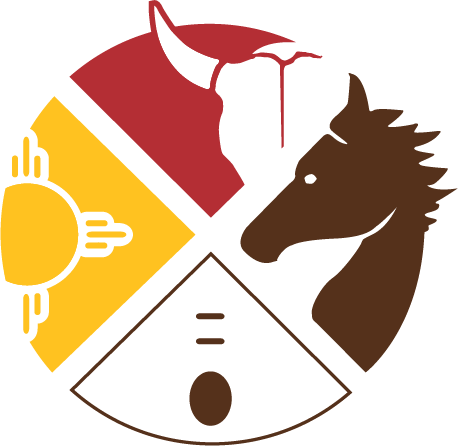The traditional Lakota Leadership Structure was based on Servant Leadership. Rather than the top-down structure we see today globally, this is based on a bottom-up organization.
Over the years, Indian Country has experienced corruption due to this top-down structure in organizations and governments. By the time the resources move through the top and “trickle down” to the people, there is not much left and it is not distributed in a fair way - often leading to inter-tribal mistrust, corruption, and a continued scarcity mindset.
We base our organization structure on traditional Lakota values. This is what makes us different, and it is why we will succeed.
1. Can’Te / Nigi - Spirit & Self 2. Tiwahe - Nuclear, Immediate Family 3. Tiyospaye - Extended Family 4. Oyate - Tribe, Band, Nation 5. Wankan Tanka - The Four Nations, All the world’s Peoples
Traditional Leadership Model:
The traditional service leadership model begins with the concept of Can'Te or Nigi, which refers to the Self and Spirit.
From there, self serves Tiwahe, which comprises one's mother, father, and siblings.
Together, the Tiwahe serves the Tiyospaye, which refers to one's extended family and immediate community.
The Tiyospaye then works together to serve the greater good of their Oyate, which traditionally refers to their tribe or band, or more broadly, their Nation in modern times.
The Nation, in turn, strives to serve the greater good of Wankan Tanka, which encompasses all four nations of humanity (European, African, Asian, and Peoples of the Americas).
This model fosters harmony between all people through honor and service. It is apparent that we have strayed from this path in modern times, with many solely focused on how others can serve them, rather than the other way around.
“Let us put our minds together to see what kind of world we can create for our children”
Servant leadership
Why?
With the classic hierarchy of organizations, resources funnel into organizations to the leaders, the leaders decide what they will like to do with this, and then the resources are distributed as they decided. This does not work for the Lakota people because it is not aligned with the traditional way of life.
How?
By empowering families. Our leadership model is that those in charge of the Tiyospaye, should be serving their Tiwahe and Tiyospaye the most. With this model and return to the traditional ways, we can empower the family heads by teaching them new practical skills and developing generational infrastructure to fulfill their Tiwahe’s food, housing, and security needs.
Once they have the skills and the tools, they can implement the solutions.



